Solving LeetCode: merge sorted array
Table of Contents
Background and motivation
The problem
The solution
Understanding the solution: part 1
Understanding the solution: part 2
What I learned
Background + motivation
As I start to prepare for SRE interviews, I want to get back in the habit of writing Ruby code regularly since SRE interviews often require candidates to pass a coding challenge.
In the past, I’ve used Exercism to prepare1. I appreciate that most problems on Exercism closely resemble problems you solve in your day-to-day job as a web developer. I also admire Exercism’s principles, specifically “Exercism should feel safe and nurturing” and “Exercism focuses on the learning journey, not the destination. The process and enjoyment of learning is more important than absolute factual correctness.”
I was curious, though, to explore another side of coding interview prep: LeetCode. According to its Google search result description, LeetCode’s goal is to help you level up your coding skills and quickly land a job. Among the tech community, LeetCode has a reputation for creating problems that replicate interview questions asked at large tech companies like Alphabet, Meta, and Netflix. While writing this blog post, I also learned that LeetCode runs weekly and biweekly coding contests. At the end of each contest, participants are assigned a rank based on solve speed and complexity of problem(s) solved.
I have some pretty critical takes on LeetCode. I wrote more about that here. I was still curious enough, though, to lay down $35.00 for a monthly subscription and try to actually solve a LeetCode problem because learning is fun!, and I wanted to prove to myself that I was smart enough to understand a LeetCode problem and its solution2.
The problem: 88. Merge Sorted Array
I chose to try and solve “88. Merge Sorted Array” because it was the first problem in LeetCode’s “Top Interview 150” study plan.
Problem description
In “88. Merge Sorted Array”, you are given two integer arrays nums1 and nums2, sorted in non-decreasing order, and two integers m and n, representing the number of elements in nums1 and nums2 respectively.
Your goal is to merge nums1 and nums2 into a single array sorted in non-decreasing order. The final sorted array should not be returned by the function, but instead be stored inside the array nums1. To accommodate this, nums1 has a length of m + n, where the first m elements denote the elements that should be merged, and the last n elements are set to 0 and should be ignored. nums2 has a length of n.
First Impressions
- What is non-decreasing order ? Why not just say increasing order?
nums1,nums2,m,n… alright well, why not just call thema,b,doodleanddee?- I’m confused :upside-down-smile:
Attempts to solve
I wish I had saved my first few solve attempts, but alas, I didn’t know then I’d be blogging about it. I do remember writing a solution where I replaced each zero in the first number array with an integer from the second number array, then used the Ruby array method sort! to sort the remaining values in increasing order. This failed several of the test cases. I also remember trying to iterate over the first numbers array, inserting values from the second array at the appropriate location, then removing all the zeroes from the first numbers array at the end, which also didn’t work but I don’t remember why.
The solution
After spending about 45 minutes attempting to solve the problem, I gave myself permission to look ahead to the solutions. I chose “Explanation with code on ruby” by user worldisaduck. Thank you, worldisaduck, for your help!
def merge(nums1, m, nums2, n)
i = nums1.length - 1
m -= 1
n -= 1
while i >= 0 && n >= 0
if m >= 0 && nums1[m] > nums2[n]
nums1[i] = nums1[m]
m -= 1
else
nums1[i] = nums2[n]
n -= 1
end
i -= 1
end
end
# code by worldisaduck
Understanding the solution: part 1
As written, the solution was hard for me to understand. Why am I comparing nums1[m] to nums2[n]? What even is nums1[m]? I decided to annotate it and rename some variables to make it make more sense to me. I also realized the while loop only needed to check the nums2_index. The comments and variables are my sixth or seventh iteration of figuring it out:
def merge(nums1, nums1_non_zero_length, nums2, nums2_length)
position_in_contention_for_current_highest_value = nums1.length - 1
# starting with the highest number in the `nums1` array and the highest number in the `nums2` array
nums1_non_zero_index = nums1_non_zero_length - 1
nums2_index = nums2_length - 1
# and so long as the shorter array still has values up for comparison
while nums2_index >= 0
# check if `nums1` still has values that need to undergo comparison
# if yes, then see if the value up for comparison in `nums1` is greater than the value up for comparison in `nums2`
if nums1_non_zero_index >= 0 && nums1[nums1_non_zero_index] > nums2[nums2_index]
# if yes, assign the higher value (will always comes from nums1) to the position in contention
nums1[position_in_contention_for_current_highest_value] = nums1[nums1_non_zero_index]
# move down the line on the non-zero values in nums1 array
nums1_non_zero_index -= 1
else
# otherwise, assign the higher value (will always comes from nums2) to the position in contention
nums1[position_in_contention_for_current_highest_value] = nums2[nums2_index]
# move down the line on the nums2 array
nums2_index -= 1
end
# the position up for contention has been filled for this turn; keep on moving down the line
position_in_contention_for_current_highest_value -= 1
end
end
Understanding the solution: part 2
I also wanted to let myself see what was going on at each step by allowing myself to move the numbers around and see stuff with my eyes instead of in my head, so I made manipulatives. Manipulatives are objects teachers use to translate abstract ideas into something tangible. I love manipulatives.
Each row of images below corresponds to a turn through the while loop in the code. The loop continues so long as the shorter array (nums2) still has values up for comparison.
The #merge function has four parameters, nums1, nums1_non_zero_length, nums2, and nums2_length. In the pictures,
nums1is the top purple array:[1,2,3,0,0,0]nums2is the bottom purple array:[2,5,6]
The remaining two parameters, nums1_non_zero_length and nums2_length, are used to calculate the two starting indices:
nums1_non_zero_indexis equal tonums1_non_zero_lengthminus one since indices start at 0. That’s 3 - 1 = 2. The value at index 2 innums1is 3. The blue triangle marks this spot.nums2_indexis equal tonums2_lengthminus one since indices start at 0. That’s 3 - 1 = 2. The value at index 2 innums2is 6. The red triangle marks this spot.
Finally, the green triangle sits at the position_in_contention_for_current_highest_value, which starts at the last position in nums1 since we’re sorting values from highest to lowest.
1st turn
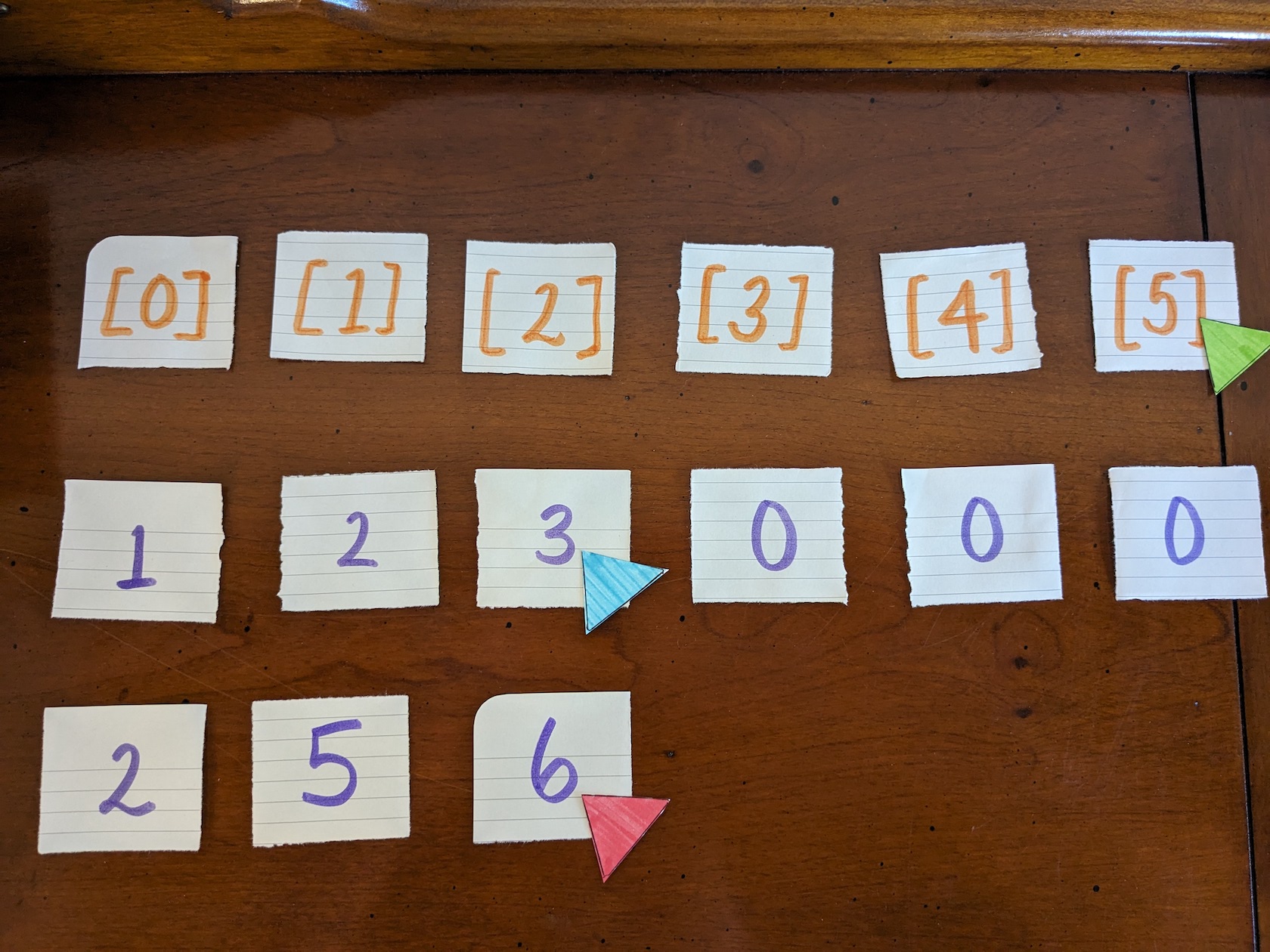
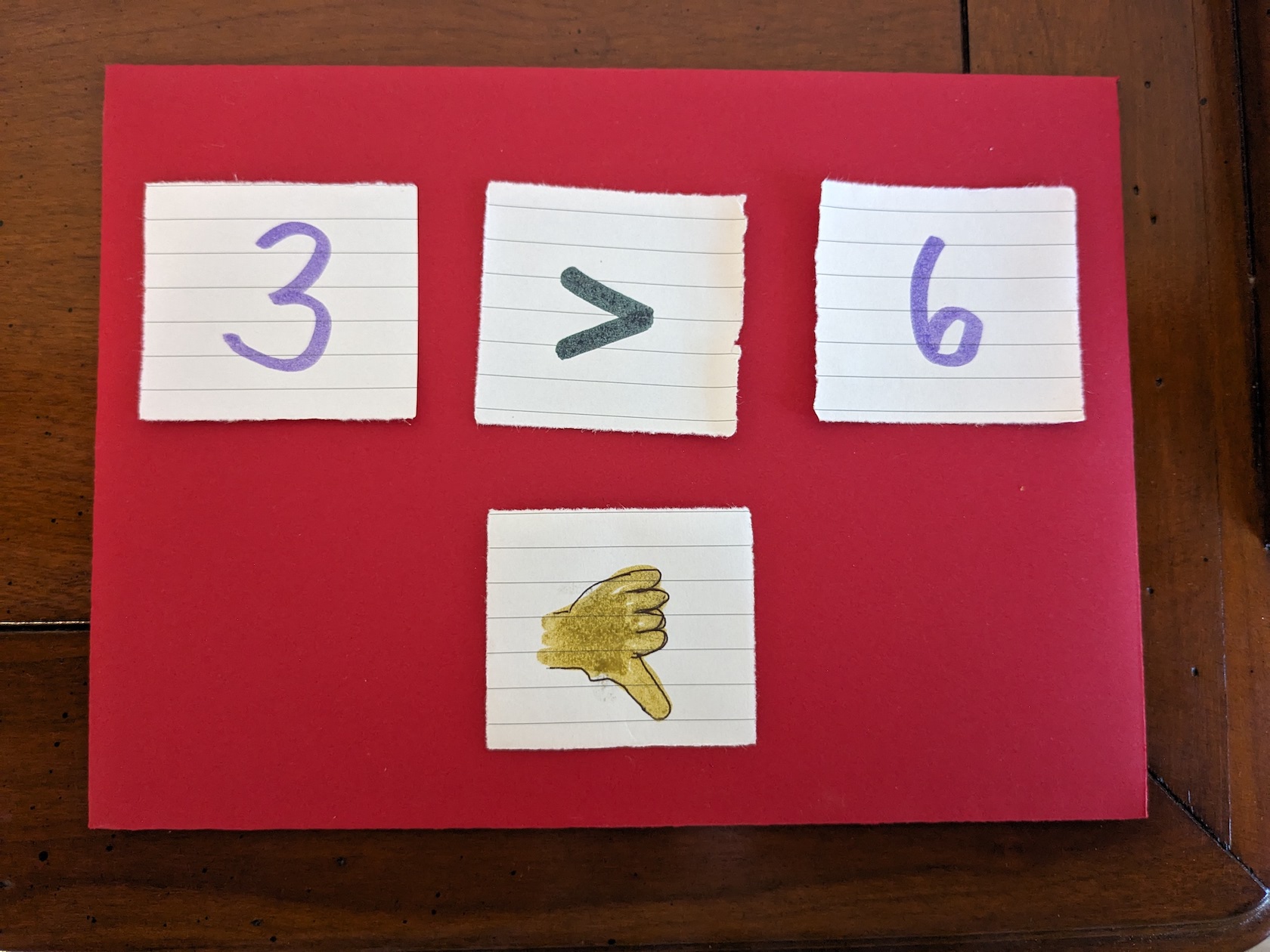
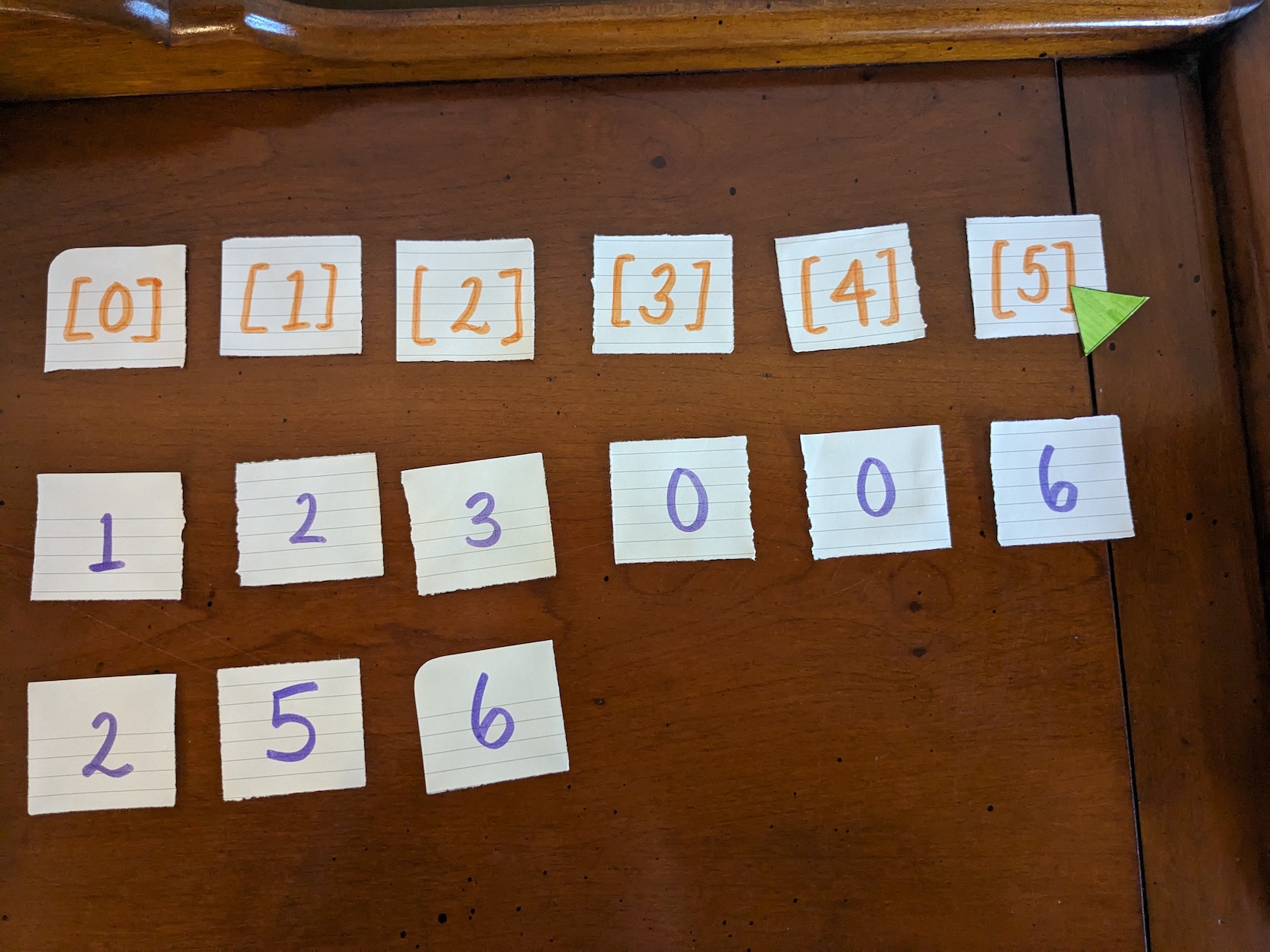
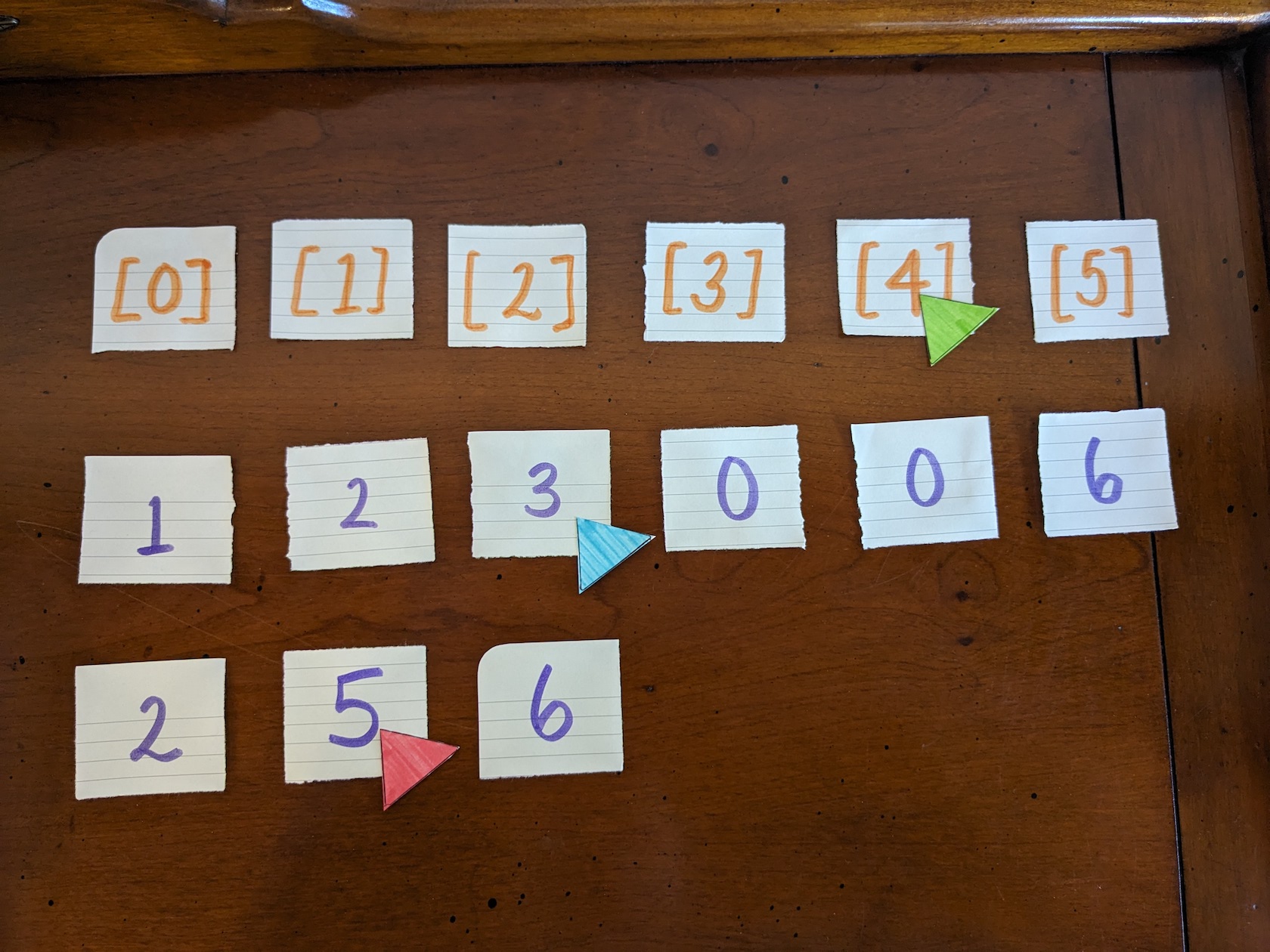
Goal: Find the highest number from both arrays and place it at the end of nums1.
Method: Compare the highest number from nums1 to the highest number from nums2
-if the nums1 value is greater, place it at the position-in-contention-for-highest-value in nums1 and move the marker for current highest value in nums1 down one
-if the nums2 value is greater, place it at the position-in-contention-for-highest-value in nums1 and move the marker for the current highest value in nums2 down one
In all cases, move the marker for the position in contention for the highest value down one
Action taken: Place 6 at the position-in-contention. Move the markers for current highest value in nums2 and position-in-contention down one.
2nd turn


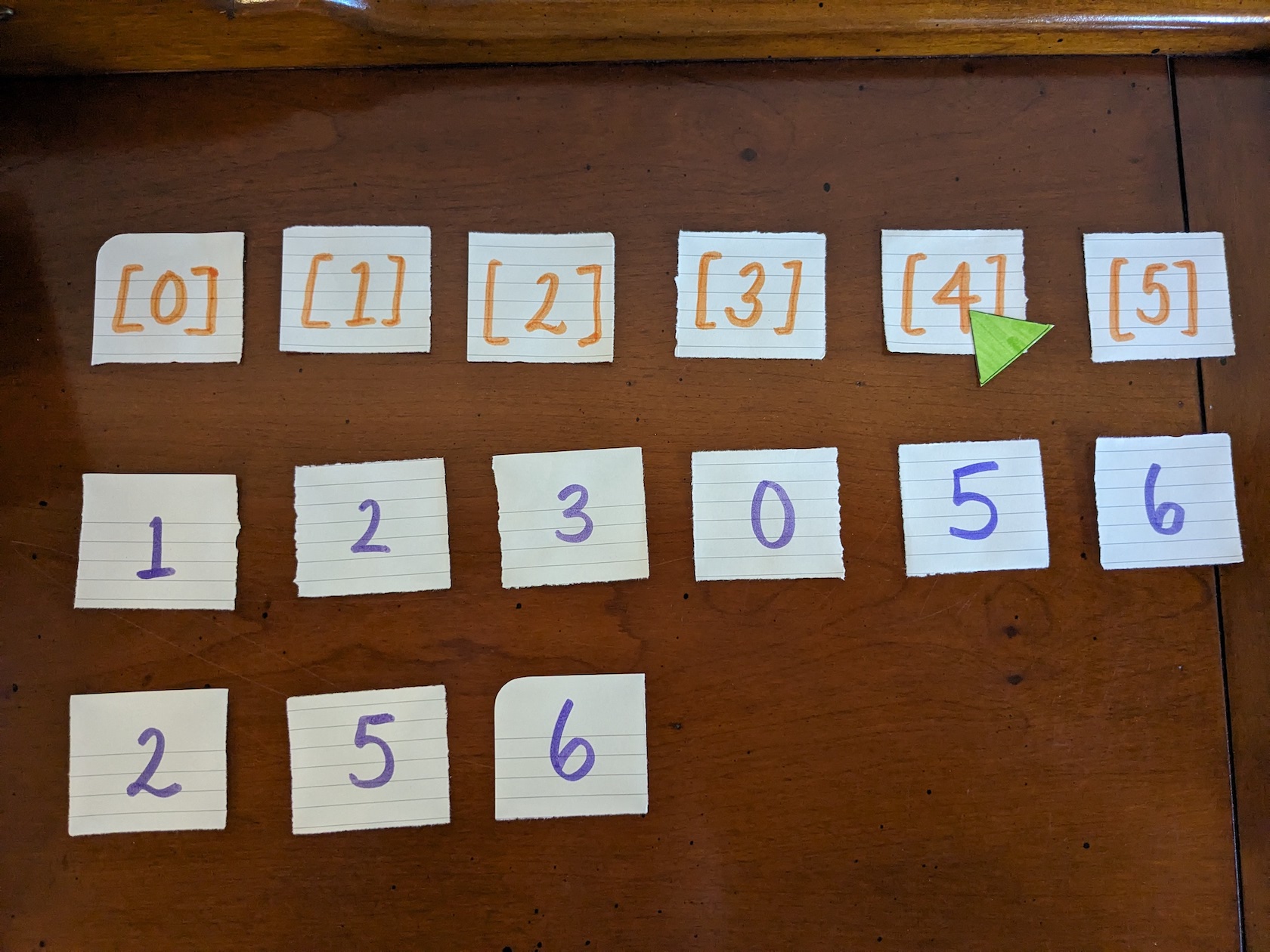

Goal: Find the next highest number from both arrays and place it right before the previous greatest number.
Method: Compare the current highest number from nums1 to the current highest number from nums2
-if the nums1 value is greater, place it in the position-in-contention-for-highest-value and move the marker for current highest value in nums1 down one
-if the nums2 value is greater, place it in the position-in-contention-for-highest-value and move the marker for current highest value in nums2 down one
Action taken: Place 5 at the position-in-contention. Move the markers for current highest value in nums2 and position-in-contention down one.
3rd turn

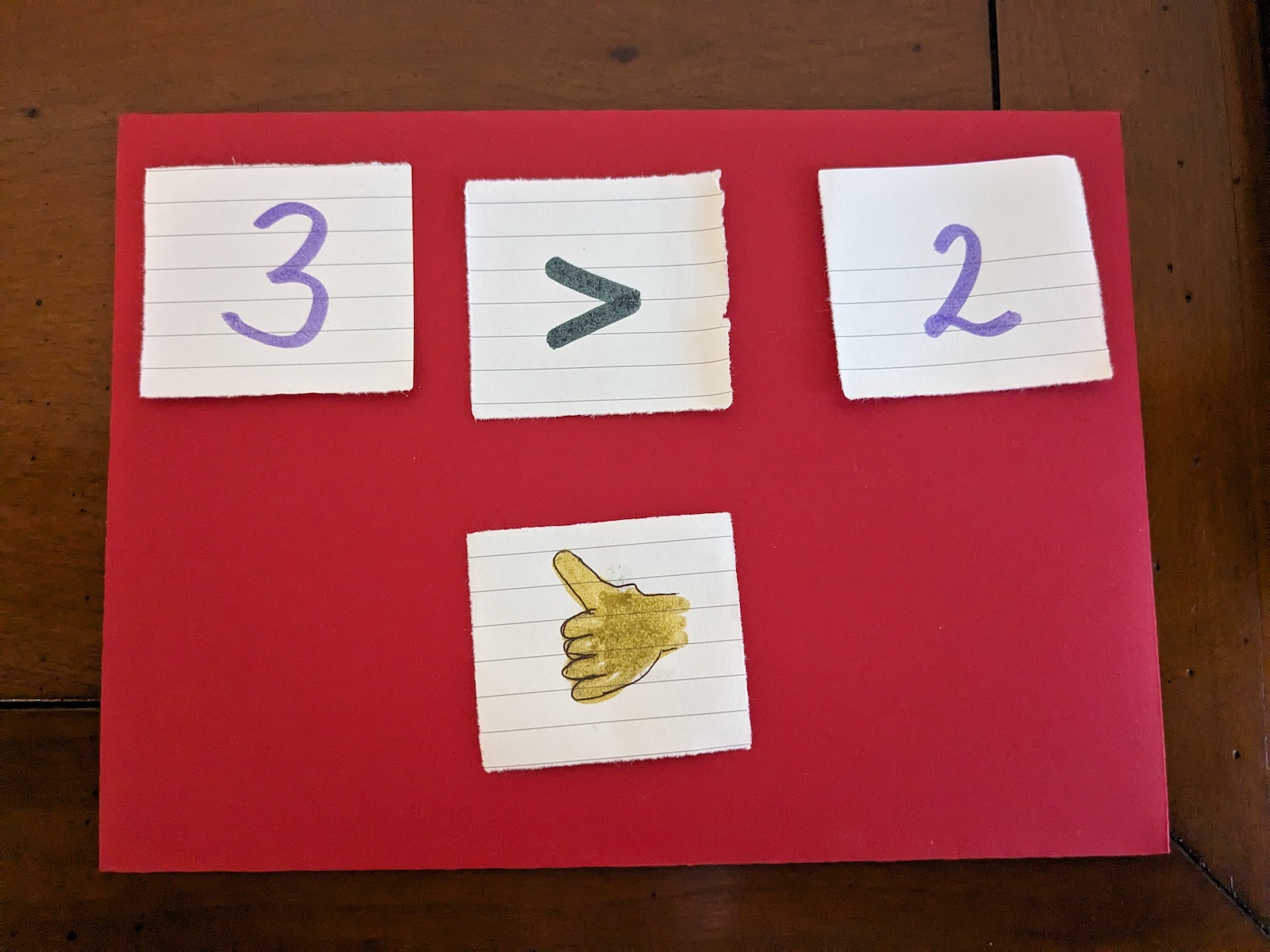
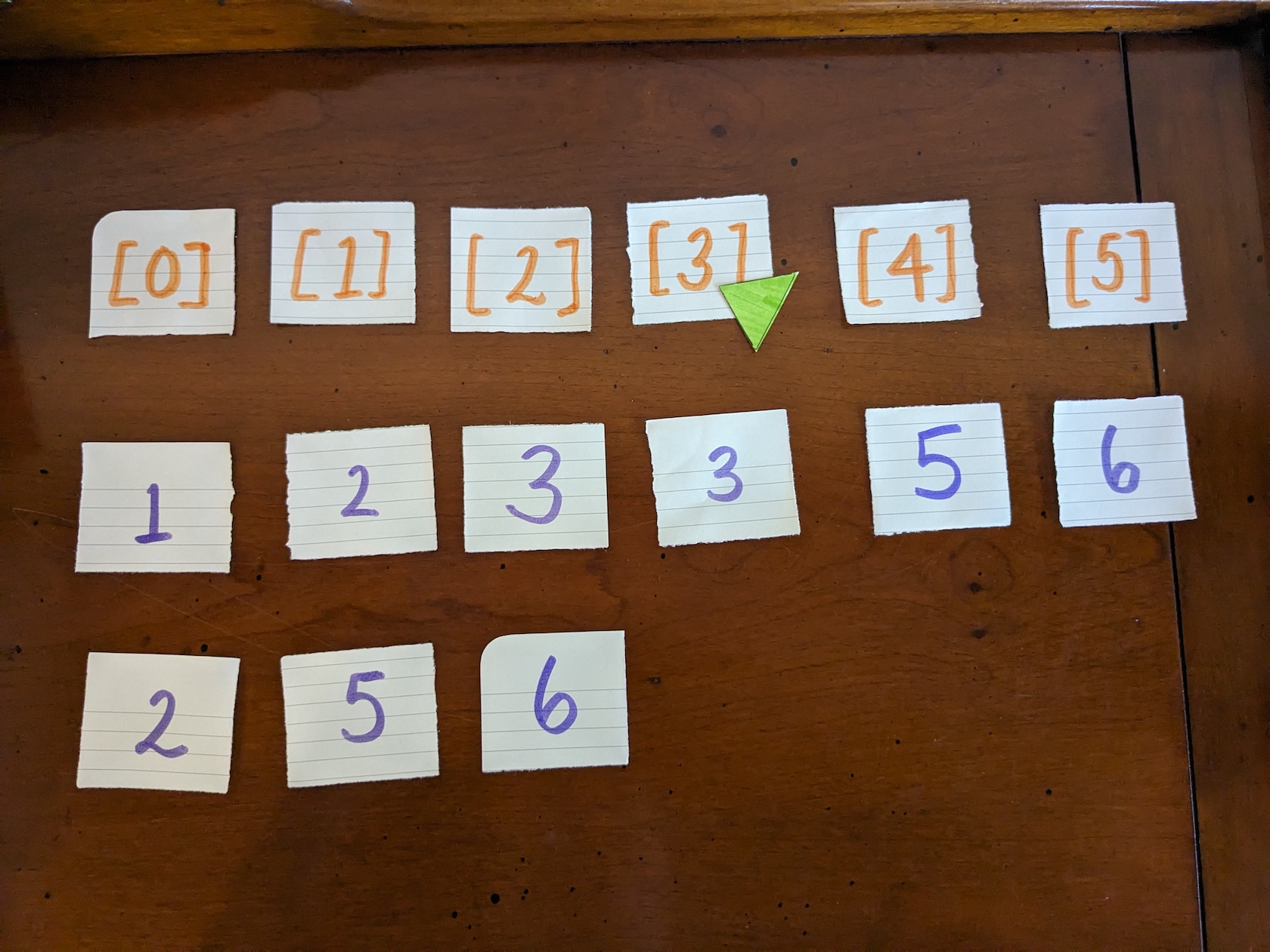
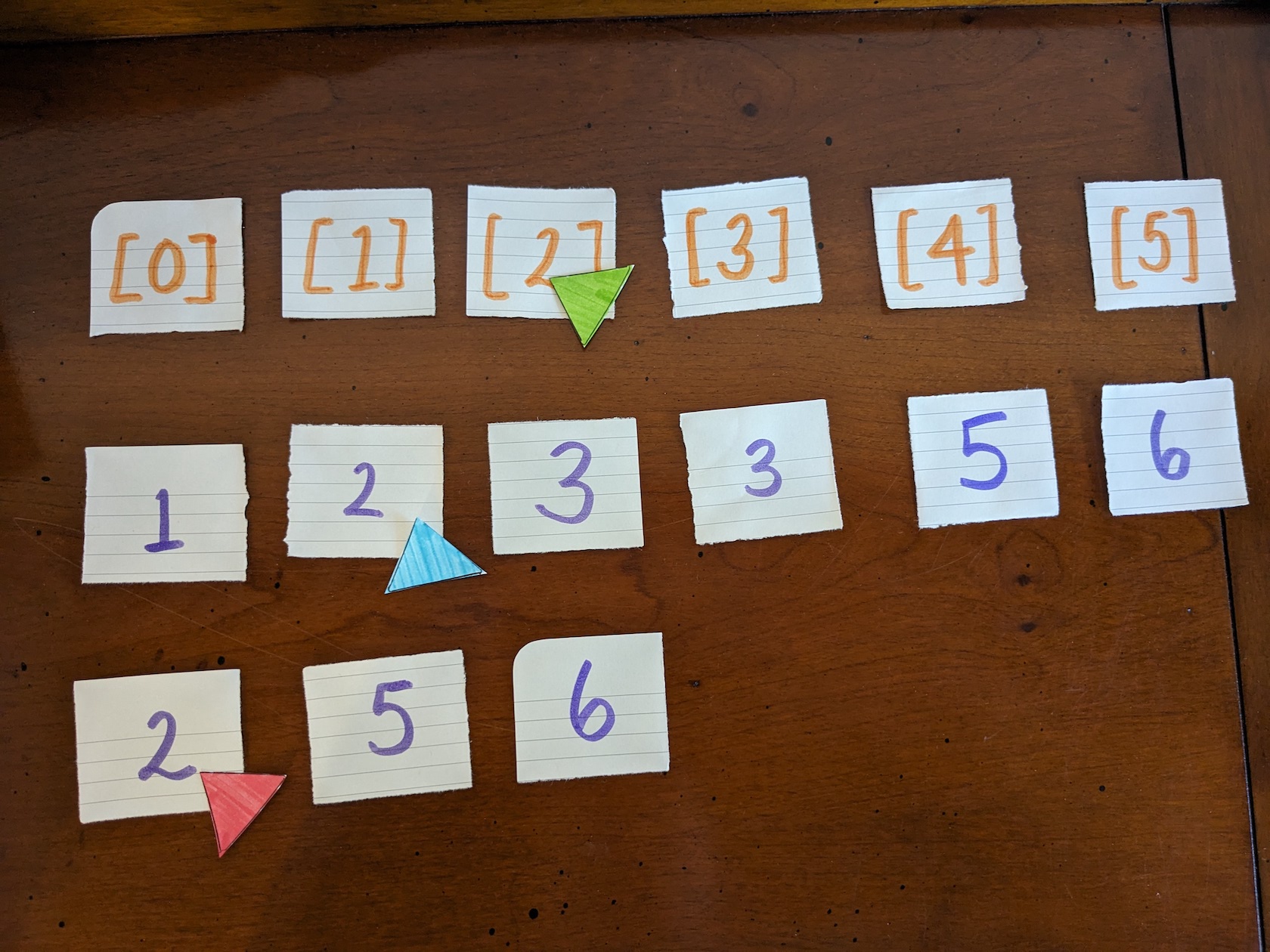
Goal: Same as before
Method: Same as before
Action taken: Place 3 at the position-in-contention. Move the markers for current highest value in nums1 and position-in-contention down one.
4th turn

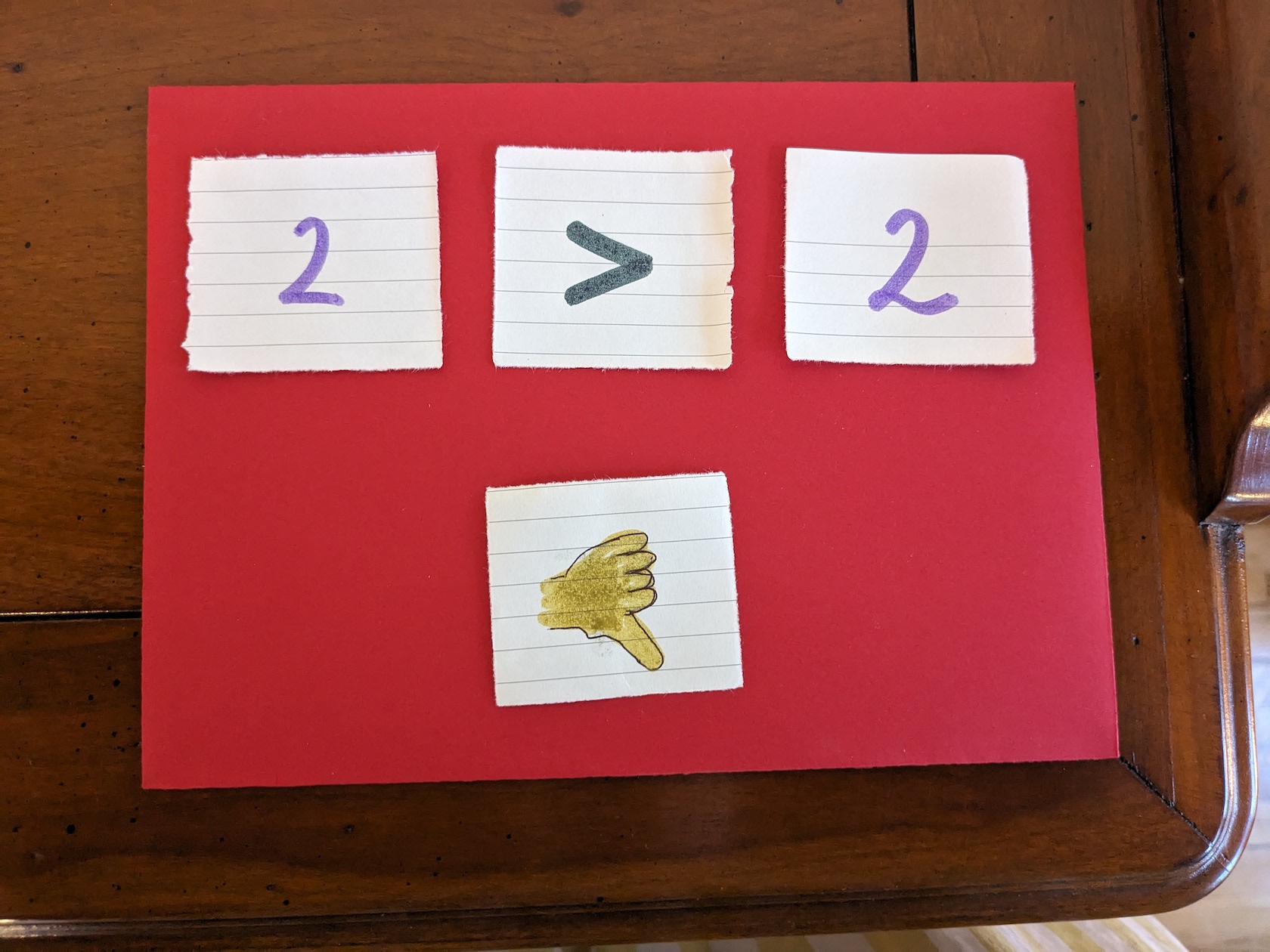
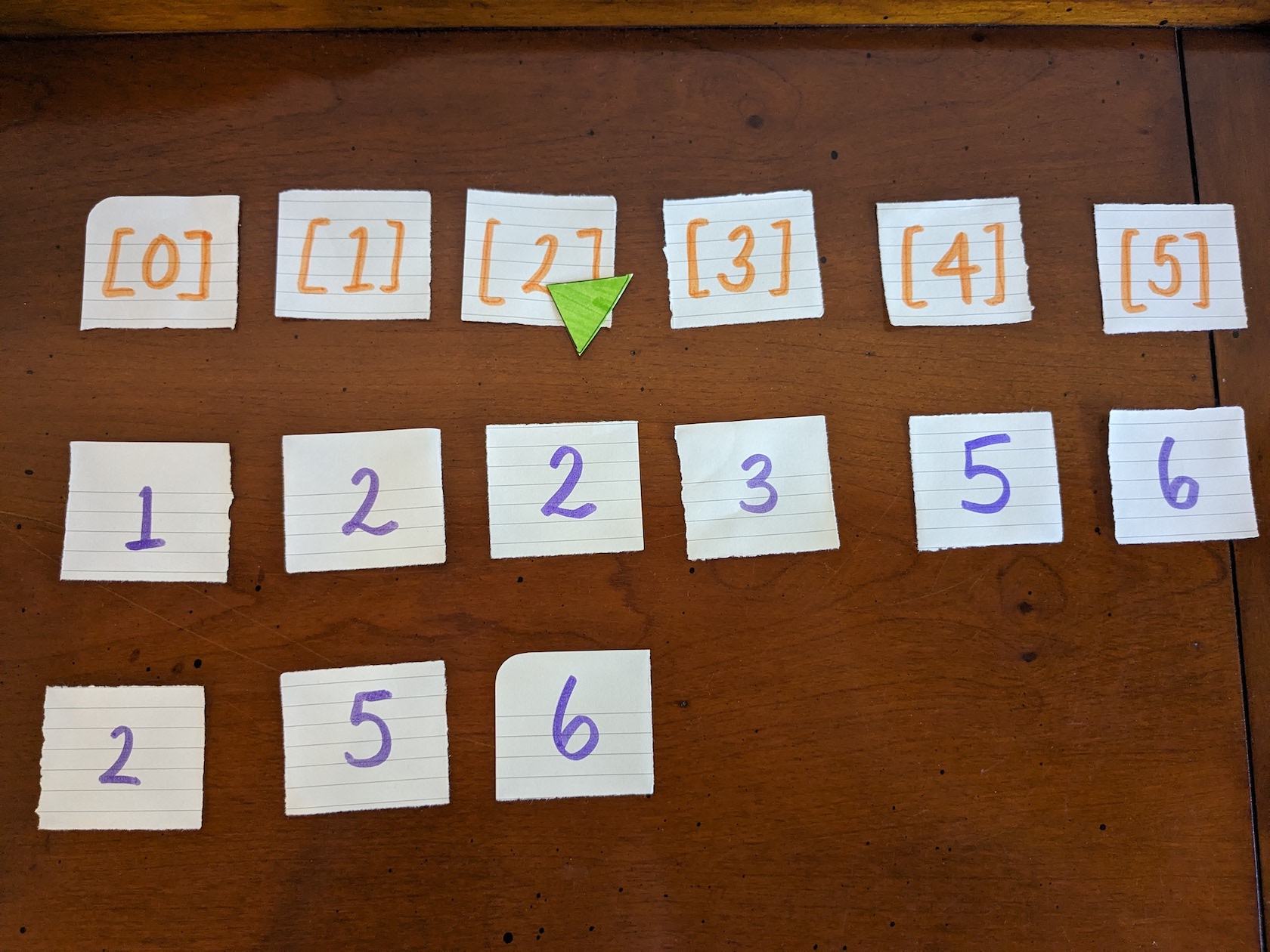
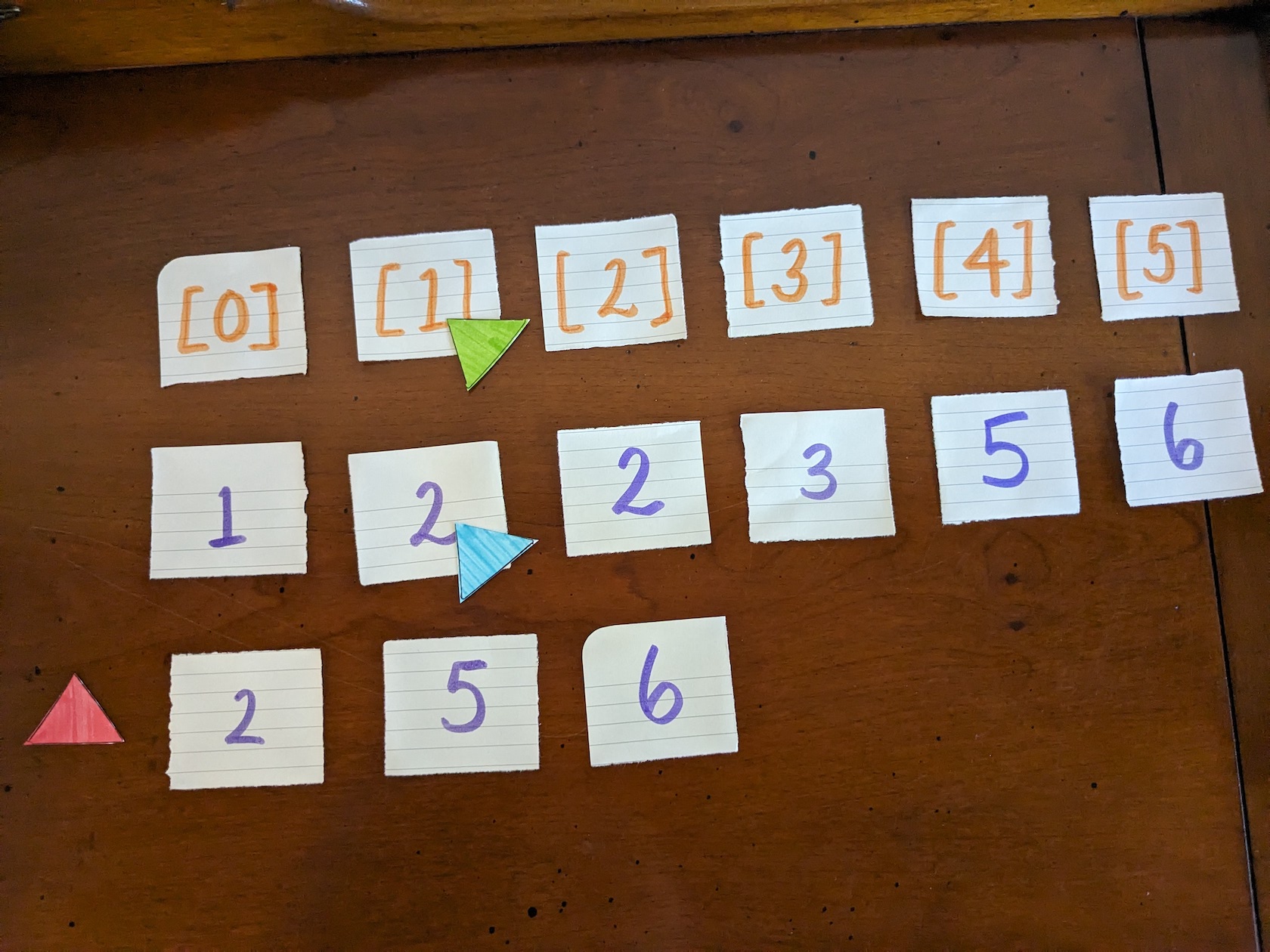
Goal: Same as before
Method: Same as before
Action taken: Place 2 at the position-in-contention. Move the markers for current highest value in nums2 and position-in-contention down one.
5th turn

Goal: Same as before
Method: Same as before
Action taken: None needed! There are no more nums2 values up for comparison. The values in nums1 are correctly sorted in increasing order. Ta da!
What I learned
- It’s worth considering if it makes sense to iterate over an array backwards (right to left, end to beginning, etc).
- You don’t always need to move values from one array to another (add to one; delete from another).
- While working toward the correct solution, there will be points where the work in progress looks wrong. This was the case for me with the 3rd turn in this problem. I was so confused. How could
nums1have two 3’s? That can’t be right; there’s only one 3 in the whole bunch. It was a learning moment for me to recognize that the two 3’s wouldn’t stick around because the second 3 in the 3rd turn placement ([1,2,3,3,5,6]) was in its final position, whereas the first 3 ([1,2,3,3,5,6]) was just a placeholder for the next highest value to go and that next value could never be a 3 because the 3 had already gone to battle in the comparison ring. - It’s okay to look ahead at the solution. That’s how you learn.
- Using manipulatives makes learning fun! It also helps me build reusable mental models that I can bring with me into future coding problems.
More on LeetCode
From my view, the kind of technical interview questions LeetCode endorses encourage developers to write code as close to its raw state as possible (variables named “input” and classes named “stringToListNode”). LeetCode also fosters an environment where users evaluate themselves on speed, correctness, and how fast and how right they are compared to other LeetCode users.
More to the heart of the issue, though, is that using LeetCode-like (data structures and algorithms) problems to screen candidates belies an employer mindset that their employees are members of an elite class. They’re smarter (better) than people who don’t work there, and admission to the group of elites requires interviewees to prove their worth by a willingness to spend dozens, if not hundreds, of hours learning how to solve puzzles they’ll only ever have to solve again in an interview setting.
-
You can check out my solutions and work in progress for Exercism’s Ruby track here. ↩
-
Ideally I wouldn’t feel the need to prove to myself that I’m smart enough or good enough by showing I can solve LeetCode-esque problems. I have compassion for the part of me that believes doing so qualifies me as “smart enough,” though, because this is the message sent to developers by companies who use these problems to screen candidates. ↩